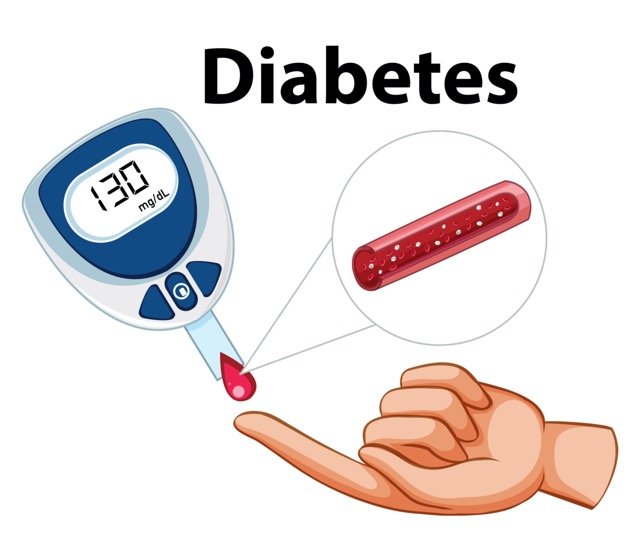The rabies vaccine is an inactivated vaccine that induces antibody production resulting in active immunity. It is used as a postexposure or preexposure prophylaxis for the prevention of rabies infection.
Prior to administering the postexposure prophylactic rabies vaccination, the following variables should be taken into account:
- Circumstances (provoked or unprovoked bite)
- The vaccination history of the animal that bit you
- Type of exposure (lick (non-bite) or bite)
- Species of the animal that bit you
- Prevalence of rabies in the area
Preexposure prophylaxis is recommended in the following situations:
- Those who are always in danger of infection
- Workers at the biologics production and rabies research laboratories.
- those who are frequently at risk for infection
- Workers at the rabies diagnosis laboratory
- Employees in animal control and wildlife
- Cavers
- Vets and their support crew
- People who handle bats often
- Individuals with a low risk for infection
- Veterinarians and animal control workers tend to animals in areas where rabies infection is rare.
- Vet school students
- Visitors to regions where rabies is enzootic
Which animals can transmit rabies?
Rabies virus vaccine Dose in Adults
Preexposure vaccination:
- On days 0, 7, and 21 or 28, a total of three doses of 1 mL each were intramuscularly given.
Booster vaccination for individuals with continuous or frequent risk of infection:
- 1 mL intramuscularly injected based on antibody titers
Postexposure vaccination:
-
Immunocompetent individuals:
- On days 0, 3, 7, and 14, there were four intramuscular (1 mL each) doses delivered.
-
Immunocompromised individuals:
- On days 0, 3, 7, 14, and 28, there were 5 intramuscular (1 mL each) doses delivered.
Note:
-
In addition to the initial dosage of the vaccination, all patients should also get rabies immune globulin.
-
In the following patient categories, rabies immunoglobulins are not advised, and only two doses of the vaccination should be delivered on days 0 and 3:
- those who have already received preexposure or postexposure prophylaxis.
- individuals having sufficient verified rabies antibody titers.
Rabies virus vaccine Dose in Children
Preexposure vaccination:
- Infants, Children, and Adolescents:
- On days 0, 7, and 21 or 28, three intramuscular doses of 1 mL each were administered.
Booster vaccination:
- Infants, Children, and Adolescents:
- Depending on the antibody titers, 1 mL/dose of intramuscular
Postexposure vaccination:
- Note:
- The vaccination needs to be given as soon as feasible.
- Rabies immunoglobulins should also be recommended to patients who have never had a vaccination.
- Cleaning the wound with soap, water, and an iodine-pyodine solution is advised.
- Immunocompetent:
- The four-dose regimen:
- Four 1-mL intramuscular injections were administered on days 0, 3, 7, and 14 following exposure.
- The four-dose regimen:
- Immunocompromised:
- The five dose regimen:
- 1 mL/dose intramuscular for a total of five doses.
- The dosage needs to be given on days 0, 3, 7, 14, and 28 following exposure.
- Individuals previously vaccinated should be given only two doses on days 0 and 3. Rabies immunoglobulins are not recommended in these patients.
- The five dose regimen:
Pregnancy Risk Factor C
- Rabies vaccine for postexposure prophylaxis is not contraindicated in pregnant women.
- Adverse fetal effects have not been observed in pregnant patients administered the inactivated rabies vaccine.
Breastfeeding Considerations
- The excretion of the vaccine into breast milk is not known.
- The manufacturer recommends using it with caution in lactating women.
Rabies virus vaccine Dose in Renal Disease:
Adjustment in the dose has not been recommended by the manufacturer in patients with renal disease.
Rabies virus vaccine Dose in Liver Disease:
Adjustment in the dose has not been recommended by the manufacturer in patients with liver disease.
Common Side Effects of Rabies virus vaccine Include:
- Dermatologic:
- Injection site pruritus
- Central nervous system:
- Malaise
- Dizziness
- Headache
- Gastrointestinal:
- Nausea
- Abdominal pain
- Local:
- Swelling at the injection site
- Pain at the injection site
- Erythema at the injection site
- Hematologic & oncologic:
- Lymphadenopathy
- Neuromuscular & skeletal:
- Myalgia
Frequency not defined:
- Hematologic & oncologic:
- Adenopathy
- Cardiovascular:
- Swelling of the injected limb
- Cardiovascular toxicity
- Edema
- Palpitations
- Dermatologic:
- Pruritus
- Urticaria
- Central nervous system:
- Guillain-Barre syndrome
- Meningitis
- Neuropathy
- Paresthesia
- Retrobulbar neuritis
- Seizure
- Paralysis
- Chills
- Encephalitis
- Fatigue
- Vertigo
- Respiratory:
- Bronchospasm
- Dyspnea
- Wheezing
- Endocrine & metabolic:
- Hot flash
- Gastrointestinal:
- Diarrhea
- Vomiting
- Local:
- Hematoma at the injection site
- Hypersensitivity:
- Anaphylaxis
- Hypersensitivity reaction
- Serum sickness
- Ophthalmic:
- Visual disturbance
- Neuromuscular & skeletal:
- Multiple sclerosis
- Myelitis
- Arthralgia
- Arthritis
- Limb pain
- Weakness
- Miscellaneous:
- Fever of more than 38°C (100°F)
Contraindication to Rabies virus vaccine includes:
- Preexposure prophylaxis:
- Serious adverse responses to the vaccination or any of its ingredients are possible, and they have the potential to be fatal.
- Postexposure prophylaxis:
- No contraindications have been listed in the manufacturer's labeling.
Warnings & Precautions
- Hypersensitivity reactions:
- Anaphylactic reactions may occur with its use.
- Epinephrine should be available if an anaphylactic reaction occurs.
- Postexposure prophylaxis should be continued if mild adverse effects are noted.
- Immune complex-like reactions (serum sickness):
- Patients may develop arthralgia, fever, arthritis, urticaria, angioedema, malaise, nausea, and vomiting as a result of an immune complex reaction (usually within 2 - 21 days following booster doses of HDCV).
- Neurologic reactions:
- As with earlier immunizations, rabies vaccination has been linked to multiple sclerosis, encephalitis, meningitis, myelitis, transient paralysis, retrobulbar neuritis, and Guillain-Barre syndrome that goes away in 12 weeks.
- Syncope:
- Patients may develop hypotension and syncope resulting in fall and injuries.
- Patients should be seated or lie down during and for at least 15 minutes following the injection.
- Bleeding disorders:
- Patients with a bleeding disorder should be advised of intramuscular injection with caution.
- Platelets, Factor VIII, or Fresh Frozen Plasma should be administered if indicated followed by the intramuscular injection.
Rabies virus vaccine: Drug Interaction
|
Chloroquine |
May reduce the rabies vaccine's therapeutic efficacy. |
|
Venetoclax |
may reduce a vaccine's therapeutic impact (Inactivated). |
|
Belimumab |
May reduce a vaccine's therapeutic impact (Inactivated). Management: Due to the possibility of a compromised immune response to the vaccination during belimumab therapy, patients should, wherever feasible, receive inactivated immunizations prior to beginning belimumab medication. |
|
Fingolimod |
may reduce a vaccine's therapeutic impact (Inactivated). Management: Vaccine effectiveness might be affected. Prior to commencing fingolimod, all age-appropriate vaccines must be completed at least two weeks earlier. If vaccinated while on fingolimod medication, vaccinate again 2 to 3 months after stopping fingolimod. |
|
Immunosuppressants |
may reduce a vaccine's therapeutic impact (Inactivated). Management: Vaccine effectiveness might be affected. Before beginning an immunosuppressant, finish all age-appropriate vaccines at least two weeks in advance. If vaccinated while taking immunosuppressant medication, revaccinate at least three months after stopping the medication. Cytarabine is an exception (Liposomal). |
|
Rabies Immune Globulin (Human) |
May reduce the rabies vaccine's therapeutic efficacy. Management: After receiving rabies vaccination, avoid giving rabies immune globulin in extra or repeated doses. Additionally, the vaccination and the rabies immune globulin shouldn't be given at the same time. |
|
Siponimod |
May reduce a vaccine's therapeutic impact (Inactivated). Management: Due to the possibility of diminished vaccination effectiveness, avoid administering inactivated vaccines for 1 month after stopping siponimod medication. |
Monitor:
- Allergic reaction and anaphylaxis for 15 minutes following its administration
- Patients should be monitored for hypotension and syncope. If syncope develops, the patient should be made to lie in a supine or Trendelenburg position.
- Serologic testing may be advised at 6 months intervals for high-risk patients like hunters and those at continued risk of infection prior to administering the booster dose.
- A serologic test should also be performed on immunocompromised individuals who have finished a preexposure or postexposure prophylaxis series as well as people at high risk of infection (every 2 years).
How to administer the Rabies virus vaccine?
- Intramuscular:
- It should not be administered intradermally or subcutaneously.
- The deltoid muscle should receive the intramuscular injection in a deep fashion.
- Administration in the gluteal region should be avoided as it may lead to a weaker immune response.
- After the wound has been cleaned with water, soap, and povidone-iodine solution, postexposure prophylaxis should start.
- It is not recommended to administer the human rabies immune globulin and the rabies vaccination at the same anatomical site or in the same syringe.
- It must not be used with other injections or shots.
- The patient should be seated or made to lie down to prevent vaccine-related syncope and hypotension during vaccine administration.
- A tiny needle of 23 gauge or smaller should be used for immunisation in patients who are at risk of bleeding at the injection site, followed by firm pressure applied for at least two minutes.
- Haemophilia patients should be administered the vaccine shortly after the administration of Factor VIII.
Mechanism of action of Rabies virus vaccine:
- The rabies vaccination is an inactivated viral shot that encourages the production of antibodies against the rabies virus's structural elements.
- The antibody response is generally seen in about 7 - 10 days. The rabies vaccine prevents subsequent infections.
- Rabies immunoglobulins should, therefore, be given in conjunction with rabies vaccine to prevent the disease from developing.
The onset of action (production of rabies antibodies) after intramuscular injection is about 7 - 10 days. The peak effect is seen in about 30 to 60 days and the duration of action lasts for more than one year.
International Brands:
- Abhayrab
- Berrab P
- Imovax Rabbia
- Imovax Rabia
- Imovax Rabies
- Lyssavac N
- Berna
- Rabies MIRV Vaccine
- Rabies-Imovax
- Rabiesvax
- Rabipur
- Rabivax
- Rabix-VC
- Speeda
- Verorab
Rabies Virus Vaccine in Pakistan:
|
Rabies Virus Vaccine [Inj 2.5 Iu/Ml] |
|
| Lyssavac-N | Hakintramuscularsons Intramuscularpex (Pvt) Ltd. |
| Rabipur | Novartis Pharma (Pak) Ltd |
| Verorab | Sanofi Aventis (Pakistan) Ltd. |
|
Rabies Virus Vaccine [Inj 200 Iu/Ml] |
|
| Rabies Antiserum | Hakintramuscularsons Intramuscularpex (Pvt) Ltd. |







